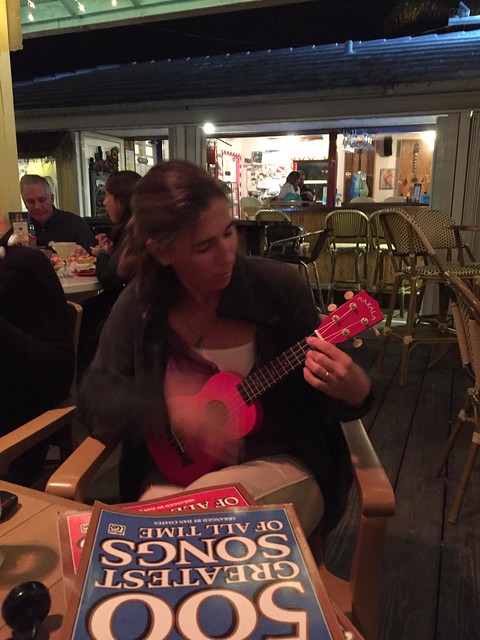We were seventeen. We had just had dinner at The Dock at Crayton Cove, Old Naples. We held hands and walked the docks in the marina in the cool evening air, talking about all sorts of things—what we were reading, what we would do after high school, the trouble with parents. Jay pointed out different kinds of boats and explained what they were and what he liked, or didn’t, about each one. He had sailed throughout his childhood on his dad’s catamaran and crewed on racing sailboats on the weekends. I had sailed maybe once in my life at that point—a thrilling but not altogether pleasant experience. But I loved the water, and I loved the idea of sailing away, and I loved that young sailor.
This was to be the first of a series of date nights that stand out in my memory as being important because we were not just talking, but laying plans for our future. We knew that sailboats would be a part of that future, but we were just beginning to imagine what that might mean. Over dinner and drinks through the years, we have plotted our escape from normal life, planned cruises, solved parenting dilemmas, made lists of boat projects, done marriage maintenance, and dreamed up new ideas for our future.
Sometimes, the questions we discussed were pivotal. Over dessert and coffee at Café Intermezzo in Atlanta: should we buy the bigger house in the nicer neighborhood, or should we sell our suburban starter-home and move back to Florida, with the goal of getting back on the water?
When Jay bought Blue Bear, the baby-blue Ranger 22 we day-sailed on Tampa Bay, he waited for a perfect day to take me out on the boat for the first time. Jay’s mom kept the kids (bless her), and Jay took me sailing. It was a chilly February afternoon, but sunny and breezy, a dazzling day on the water. Smart boy, he wanted to make sure I had an experience that I would want to repeat.
Once, Jay came to dinner at Columbia in Clearwater with pens and paper and an assignment: write down every marketable skill we possess that could serve to either make money while traveling or help us live aboard and cruise.
At our favorite little French place, Le Bouchon, we made a list of things we could do to help us live more simply and prepare for life aboard: wash dishes by hand, give things away, homeschool the kids, turn the air conditioner off (we lasted until mid-June), and take sailing classes (which I did).
Last year at Harbor Cove, we made a list of the places we still want to go and what it would take to get there. Two weeks ago at Herbie’s in Marathon, we worked on our go-list as we prepare to set off again, chasing new horizons.
For many years while we had small children and nursing babies, Date Night was a rare and cherished treat, reserved for birthdays and anniversaries. Now, with teenagers in the house, Date Night has become a regular part of our week. Despite the fact that we are living in the castle we built in the clouds so many years ago, we still have decisions to make and problems to solve, and getting off the boat and out of our wonderful-but-chaotic home environment helps us to look at things more objectively and focus on our relationship. Like the song says, it takes two to make a thing go right.



